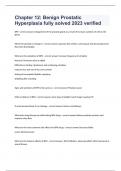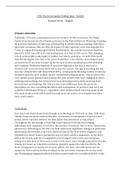Samenvatting
Summary Psychopharmacology - All Study Questions Answered - 2020/
- Vak
- Instelling
- Boek
This file contains the answers of all the study questions for Psychopharmacology. Being able to answer the study questions will make sure you will pass for the Psychopharmacology exam. Good luck!
[Meer zien]













